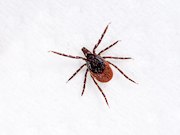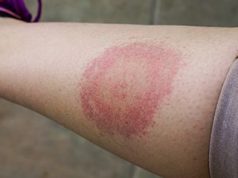12 percent of the children clinicians thought were unlikely to have Lyme disease had Lyme disease
MONDAY, Nov. 27, 2017 (HealthDay News) — Clinician suspicion has minimal accuracy for the diagnosis of Lyme disease, according to a study published online Nov. 24 in Pediatrics.
Lise E. Nigrovic, M.D., M.P.H., from the Boston Children’s Hospital, and colleagues assembled a prospective cohort of children aged 1 to 21 years evaluated for Lyme disease to examine the accuracy of clinician suspicion. Treating physicians were asked to estimate the probability of Lyme disease, and the ability of clinician suspicion to diagnose Lyme disease was calculated as the area under the curve for the receiver operating curve. Lyme disease was defined as a patient with an erythema migrans lesion or positive two-tiered serology results for patients with compatible symptoms.
Overall, 1,021 children were enrolled, of whom, 23 percent had Lyme disease. The researchers found that clinician suspicion had a minimal ability to differentiate children with and without Lyme disease (area under the curve, 0.75). Twelve percent of the 554 children who the treating clinicians thought were unlikely to have Lyme disease had Lyme disease, and 31 percent of those who the treating clinicians thought were very likely to have Lyme disease did not have Lyme disease.
“Because clinician suspicion had only minimal accuracy for the diagnosis of Lyme disease, laboratory confirmation is required to avoid both under- and over-diagnosis,” the authors write.
Copyright © 2017 HealthDay. All rights reserved.








